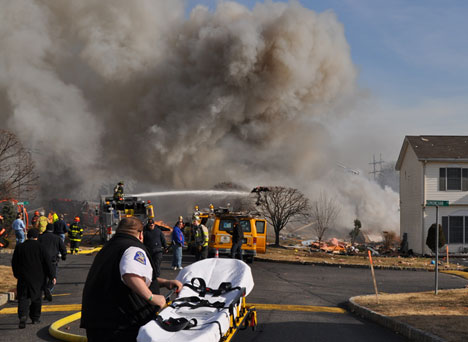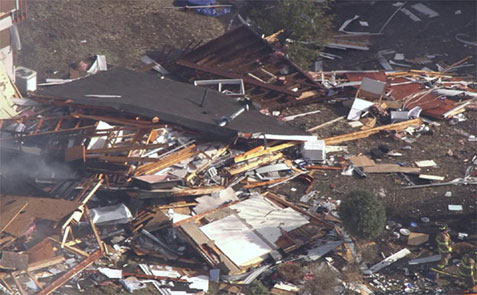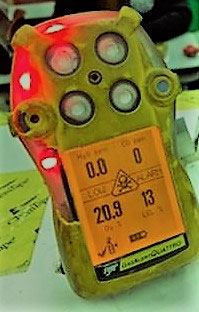
By Jerry Knapp
It was an ordinary and annoying gas leak response until the house exploded and my captain and I were nearly killed. This short article will help you improve your response tactics to natural gas emergencies. (For full details, see Fire Engineering March, April, and May 2017 issues)

(Photo by Dominick D’Alisera.)
The gas technician reported a high reading of gas coming from the inside to the outside and said he needed us to force the door to get inside this locked house. In a moment, the house exploded, launching me from near the front door to the curb; my captain landed in the side yard.
RELATED
- Tactical Procedures for Responding to Natural Gas Emergencies
- Improving Response Procedures to Natural Gas Emergencies
- Tactical Procedures for Explosive Gas Alarms
- Natural Gas Emergency Strategy and Tactics
- Training for Natural Gas Emergencies
- Applying FDIC Training to Your Fire Department
There is no safe way for the fire department to enter a building containing natural gas and numerous ignition sources. This structure is an improvised explosive building. Shut off the utilities and wait for it to vent down naturally.

A contractor hit an underground two-inch 60 psi gas main. Gas migrated underground for nearly an hour and we had been on the scene for 43 minutes along with two gas technicians from the local utility when the last house we were evacuating exploded, spreading us and itself all across the neighborhood. In a microsecond it went from a routine gas leak to life and death. A lot has happened since then.
The New Jersey-New York Firemen’s Association asked me to give them a short talk at their meeting in January 2019. The following is how I summarized what I learned so they and you can better prepare your firefighters for natural gas leak response.
RESPONSE PROCEDURES
Fire department sshould be using response procedures similar to the utility gas technicians: the hazard and goal is the same! The fire department mission is simple–life safety. Most gas utilities do not share their gas response procedures with firefighters, yet they call us when their system has an emergency. How do you expect the team to perform on game day when the fire department does not know their game plan and your firefighters and gas techs never practice (train) together? (Navy SEALS don’t learn to swim in the classroom.) Utility response procedures are public documents and are subject to Freedom of Information Laws (FOIL). Ask for them first, FOIL them if you have to so you can base your standard operating procedures (SOPs) on them. The fire department and the utility gas techs should be doing similar procedures at a gas emergency.
Gas Meters
This one is on us, period. We need to have a better understanding of how to use our four-gas meter and its limitations. Here are a few key points about your meter and your gas sop to consider.

Note the skull and crossbones on this meter that started to alarm at 10 percent LEL. What does your meter read at 100 percent LEL?
You need more training on your four-gas meter.
You need to know how long it takes to process a sample and provide a reading (often around 30 seconds).
Your SOP must provide action levels. Namely, the action you want your members to take at specific readings (LEL levels).
You need to know what your meter is set up to detect. Methane, propane, gasoline?
You need to read the directions that came with your meter–it is not a halligan tool.
WORLD-CLASS TRAINING
Working with the New York Department of Public Service (regulates utilities) I was able to secure funding to build a full-scale training site called “Leak Street” at the Rockland County Fire Training Center, Pomona, New York.

Leak Street simulates a residential street, enabling firefighters to practice full-scale evolutions using state-of-the-art training aids. Coupled with classroom sessions it provides world-class training opportunity.
Natural gas emergencies are a common call for most fire departments. For the incident commander, the goal of your gas leak size up must be to determine if there is a life hazard and take reasonable risks with firefighters lives to rescue the civilians we are sworn to protect.
JERRY KNAPP is a 42-year firefighter/EMT with the West Haverstraw (NY) Fire Department and a training officer with the Rockland County Fire Training Center. He is chief of the hazmat team and a technical panel member for the Underwriters Laboratories research on fire attack at residential fires. He authored the Fire Attack chapter in Fire Engineering’s Handbook for Firefighter I and II and has written numerous articles for Fire Engineering.

